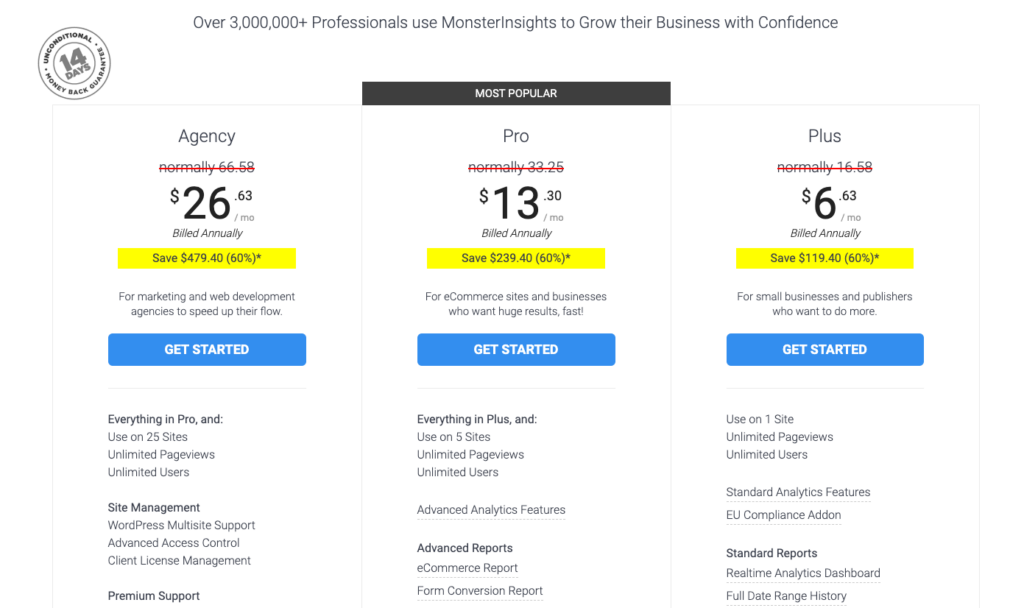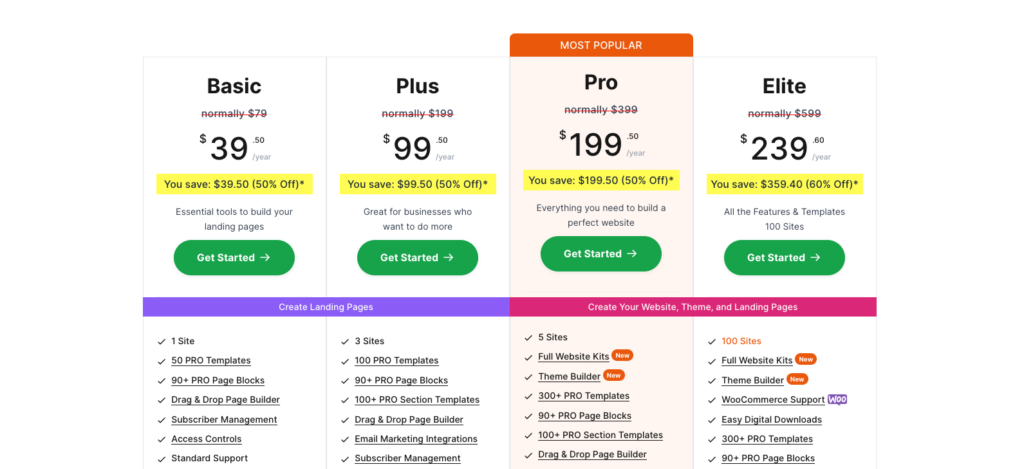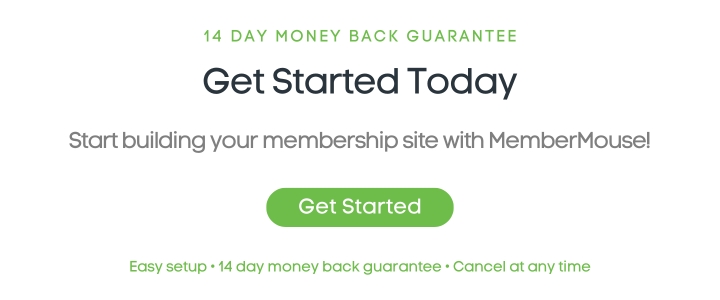Tiered Pricing Strategies: Expert Actionable Tips to Step Up Your Revenue
Increase customer satisfaction and drive revenue when you optimize your tiered pricing strategy with our expert tips. Read on for actionable advice you can apply today.
Adopting a tiered pricing strategy on your membership or subscription site is nothing new. In fact, it's fairly standard practice. But dissecting and understanding the many reasons why it's such a popular option can help you construct a strategy to optimize customer acquisition and revenue.
By the end of this blog, you'll have the tools and insights necessary to refine your tiered pricing strategy for maximum impact.
You'll be better equipped to attract new customers and provide opportunities to increase sales with your current members. You'll also understand how to apply consumer psychology principles to significantly boost your revenue potential.
Your price chart is the final, crucial pre-purchase pit stop. It's here that customers decide whether they want to sign up and the amount they're prepared to invest.
Instead of stumbling at this final hurdle, let's use this opportunity to springboard your business to new heights.

What Is Tiered Pricing?
Tiered pricing is a pricing strategy where a company offers its products or services at different price points, with each tier offering a progressively higher value or greater quantity of goods or services.
This model allows your customers to choose the option that best fits their needs and budget based on the features, benefits, or volume they desire.
The tiered pricing strategy is widely used across various industries, including SaaS (Software as a Service), membership sites and other subscription-based services.
What makes it popular is its versatility in accommodating different customer preferences and enhancing revenue opportunities.
Tiered pricing differs from other pricing strategies such as:
- Flat-rate pricing – With this model, you charge a single price for unlimited access to features. While straightforward to manage and easy for customers to understand, it often means you overcharge or out-price lite users of your product or service.
- Volume-based pricing – Pricing is determined by the quantity purchased, with the unit price typically decreasing as volume increases. This model is also known as bulk pricing, and is often used in B2B or wholesale environments where purchasing large quantities is standard.
You can get a full overview of alternative pricing strategies in our essential guide to membership pricing:
Benefits of the Tiered Pricing Strategy + Actionable Next Steps
Without further ado, let's look more closely at the benefits of this pricing model and how you can leverage them to optimize your strategy.
We're following up each benefit with proven actionable advice, ready for you to apply to maximize impact, revenue and business growth.
1. Appeals to More Customers
The number one reason why businesses choose the tiered pricing strategy is for its high customization and flexibility.
Tiered pricing allows you to cater to different segments of your market by offering varied levels of service or product bundles.
This flexibility means customers can choose a tier that best matches their needs and budget.
It also allows for a greater personalization. By providing options, you can meet the diverse preferences and requirements of your customer base more effectively.
MonsterInsights uses a tiered pricing strategy for professionals with varying needs and budgets:
- Their Plus plan covers the most fundamental features of the plugin,
- Pro offers more advanced reports,
- Their Agency plan meets the needs of a specific segment of their customer base: marketing and web agencies.

Actionable Steps for Your Strategy
Establish customer segments to determine how best to structure your tiers:
- Conduct market research to understand the different needs, preferences, and price sensitivities within your target audience.
- Use this information to design your tiers in a way that each one appeals to a distinct customer segment, maximizing the attractiveness of your offerings across the entire market.
- Tailor the features, benefits, and pricing of each tier to match the specific value that each segment seeks, ensuring that every customer finds a tier that feels custom-made for them.
This approach not only enhances customer satisfaction but also significantly improves your chances of upselling and cross-selling within your product or service range. Which leads us to our next benefit…
2. Boosts Average Revenue Per User
With clearly defined tiers, it's easier to upsell premium levels to your existing customers, increasing average revenue per user (ARPU).
Tiered pricing provides an opportunity for initially hesitant users to start with your more budget-friendly options. As they recognize the value of your product or service, they can gradually progress up to higher tiers.
Actionable Steps for Your Strategy
Here are some tips to make the most of the upselling opportunities provided by a tiered pricing strategy:
- Introduce promotional offers or limited-time trials that allow existing customers to experience the benefits of higher tiers.
This can demystify the value of premium options and motivate customers to upgrade permanently after experiencing the enhanced features or services firsthand. - Send personalized communications to recommend the most relevant tier upgrade based on their usage such as their current membership level, how long they've been a member, and the product they've purchased.
- Solicit feedback using a tool like JotForm from your customers about their experiences with each tier. Use this feedback to suggest tier upgrades and refine and improve the offerings at each level.
By following these steps, you can effectively leverage tiered pricing to enhance customer spending and engagement as well as significantly increase your average revenue per user (ARPU).

Tiered Pricing Taps into Consumer Psychology
When used strategically, tiered pricing can also tap into consumer behavior and decision-making processes.
Understanding the psychological principles that drive consumer decisions can help you tailor your pricing strategy to boost consumer satisfaction and loyalty.
The following benefits all relate to how tiered pricing taps into consumer psychology.
3. Enhances Perceived Value
Consumers assess the worth of a product or service based on its features, benefits, and comparison to other available options.
By structuring tiers with gradually increasing value, businesses can appeal to a broader range of perceived value judgments. This makes it easier for customers to find an option where they feel they're getting value for their money.
Actionable Steps for Your Strategy
You can boost the perceived value of your product by capitalizing on the “Goldilocks effect“. This is where the middle option is perceived as “just right” by most customers. This involves:
- Create a balanced set of options. Ensure your tiers are structured so that the middle tier offers the most appealing combination of features and value, making it an attractive choice for the majority of your customers.
This can encourage upgrades from the basic tier and provide a satisfactory option for those not ready to commit to the highest tier. - In your marketing and on your pricing page, clearly outline the differences between tiers to highlight their comparative value. This comparison should make the middle option stand out as the most logical and value-rich choice for an average user.
- Regularly review and adjust the features and pricing of your tiers to maintain the effectiveness of the Goldilocks effect.
Customer preferences can shift over time, and your tier offerings should evolve accordingly to continue meeting their needs effectively.
By carefully designing your tiers with the Goldilocks effect in mind, you can guide customers towards the option that offers the best balance of features and price, enhancing their satisfaction and your revenue.
4. Addresses Choice Overload
Ever left a store empty-handed after feeling overwhelmed by the number of options? While customers generally appreciate having options, there's a point where it becomes counterproductive.
By presenting a limited number of curated options, tiered pricing helps you guide consumers towards making a choice that feels personalized and optimal.
This simplifies decision-making, reducing the cognitive load on consumers.

Actionable Steps for Your Strategy
Consider applying the following tips to your tiered pricing strategy to ease the mental burden on consumers and encourage more sales:
- Define distinct criteria for each tier that clearly differentiates them based on features, benefits, and price. This helps consumers easily understand what each option offers and which might suit their needs best.
- Limit your tiers to a manageable number, typically three to five. This range is broad enough to cater to different customer needs while avoiding overwhelming them with too many choices.
- Use descriptive tier names that reflect the value or level of service customers can expect. Descriptive names help customers quickly grasp which tier might be right for them, simplifying their decision-making process.
5. Leverages Social Proof
A popular tiered pricing strategy is to include a “most popular” badge to highlight the preferred choice among customers.
This leverages the psychological principle of social proof, where people tend to follow the actions of the masses.
Labeling a tier as “most popular” provides potential customers with a sense of conformity and assurance, making it a safer and more attractive option.
It signals that many others have chosen this tier, suggesting it offers the best value or is most suited to the average user's needs.
Here's an example from SeedProd, highlighting their most popular tier:

Actionable Steps for Your Strategy
- Analyze your sales data to determine the most popular tier as chosen by your customers. Once identified, clearly label this tier as “Most Popular” on your pricing page and in your marketing materials.
- Enhance the visibility of your most popular tier with distinctive visual cues, such as badges, contrasting colors, or a different size. This draws attention to the tier and makes it stand out from the others.
- Beyond just labeling the tier on your website, promote the fact that it's your most popular choice into your broader marketing efforts. This could include email campaigns, social media posts, and advertising.
Now It's Over To You
With the tiered pricing strategy, you can meet the diverse needs of your customers, easily attract new users, and increase revenue from existing ones.
This approach allows you to offer various levels of service or product bundles, ensuring there's something for everyone.
Implementing strategies such as the Goldilocks effect, leveraging social proof with a “Most Popular” badge, and addressing choice overload can significantly impact your pricing model's success.
These actionable tips are designed to simplify decision-making for your customers, ensuring they find the option that delivers the best value.
Now, with the insights shared throughout this blog, you have a robust toolkit to optimize your tiered pricing strategy. It's your turn to apply these strategies, refine your offerings, and watch your business grow. Let's turn this knowledge into action and drive your success forward!
Check out our knowledge base document to get started on creating a visually appealing, straightforward pricing table to display your tiered pricing options effectively.
Do you have any questions about how to optimize your pricing srategy? Let us know in the comments section below!
If you liked this article, be sure to follow us on Facebook, Twitter, Pinterest, and LinkedIn! And don't forget to subscribe in the box below.
 Blog
Blog Podcast
Podcast Support
Support Customer Login
Customer Login








